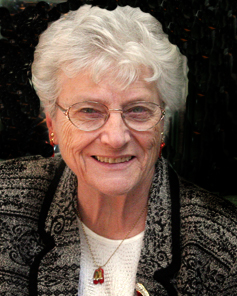
The following appeared in The Rose History in 1911.
Rock County Village of Hills continued from 5-28-20 edition of the Star Herald.
The farmers residing in the vicinity were given the privilege of christening the new town. They chose the name Oslo, but before the site was platted, late in October, it was learned that there was a town of the same name in Marshall county, Minnesota, and those interested decided on Grant for the name. That name was also short lived, for when the local passenger tariff of the new road was issued early in December, the new station was listed Anderson, in honor of Goodman Anderson, then a resident of Martin township, now of Hills. The station was known by this name until the following spring.
The townsite was surveyed in November, 1889, by O. C. Pitkin. The dedication was made February 17, 1890, by E. W. Skinner, and the instrument was filed for record May 31 of the same year.3 The track was laid to and beyond the site of the town in the fall of 1889, and before the first of the next year a depot, section house, windmill and tank were erected. No one made his home there, however, and prior to the year 1890 Hills (or Anderson, as it was then called) did not have a single inhabitant.
3The original plat consisted of sixteen blocks. North and south the avenues were named Main, were numbered First to Sixth. Additions to Hills have been platted as follows:
Lars O. Kolsrud’s, by Lars O. Kolsrud and Andrew Gunderson, July 21, 1893; surveyed by W. N. Davidson. F. C. Finke’s, by Frederick C. Finke, May 12, 1893; surveyed by W. N. Davidson. County Auditor’s Outlots, by County Auditor, October 16, 1909; surveyed by W. N. Davidson.
The first inhabitant of Anderson was Olaf Nordby, who came in January, 1890, as section foreman. The section house was occupied by one of his men who had a family, and Mr. Nordby boarded with them. Early in February B. F. Heastand came to Anderson as agent for the Sioux City & Northern and opened the station. The matter of selecting a permanent name for the town-to-be became a live issue early in the year and the matter was argued in the year and the matter was argued for several weeks before any business enterprises were started.4 On March 1 a public meeting was held, at which the name Hills was decided upon. This was given in honor of Frederick C. Hills, who was at the time the president of the Sioux City & Northern railroad.5
4“The parties interested in the new town of Anderson in Martin township are having a little squabble over the name,” — Beaver Creek Newsletter, February 21, 1890.
5Frederick C. Hills was born in England January 23, 1842, and came to America with his parents at the age of seven years. He served three months in the Civil War, being discharged because of physical disability. He located in Sioux City, Iowa, in 1864, was one of the organizers of the Sioux City & Northern, and for seven years served as president and general manager of that road. He died from poisoning in Sioux City, November 23, 1899.
In the spring of 1890 Hills became a town in fact as well as in name. Several business enterprises were started, and before the close of the summer season there were quite a number of stores, shops and warehouses, the greater number of which had come in their entirety from the neighboring village of Bruce. To William Thompson, who lived on his farm adjoining the townsite, and Orval E. McClarey belong the honor of being the first to engage in business in Hills. In March these gentlemen erected the first business house in the town, on Main street, one block from the depot, and on April 28 opened a grocery and hardware store, also engaging in shipping livestock.6 While Thompson & McClarey were establishing the first business house, others were putting up buildings in the new town, and immediately after the pioneer store was started other business enterprises were founded.
The story of the village of Hills will continue in the June 11 edition of the Star Herald.
Donations to the Rock County Historical Society can be sent to the Rock County Historical Society, 312 E. Main Street, Luverne, MN 56156.
Mann welcomes correspondence sent to mannmade@iw.net.



